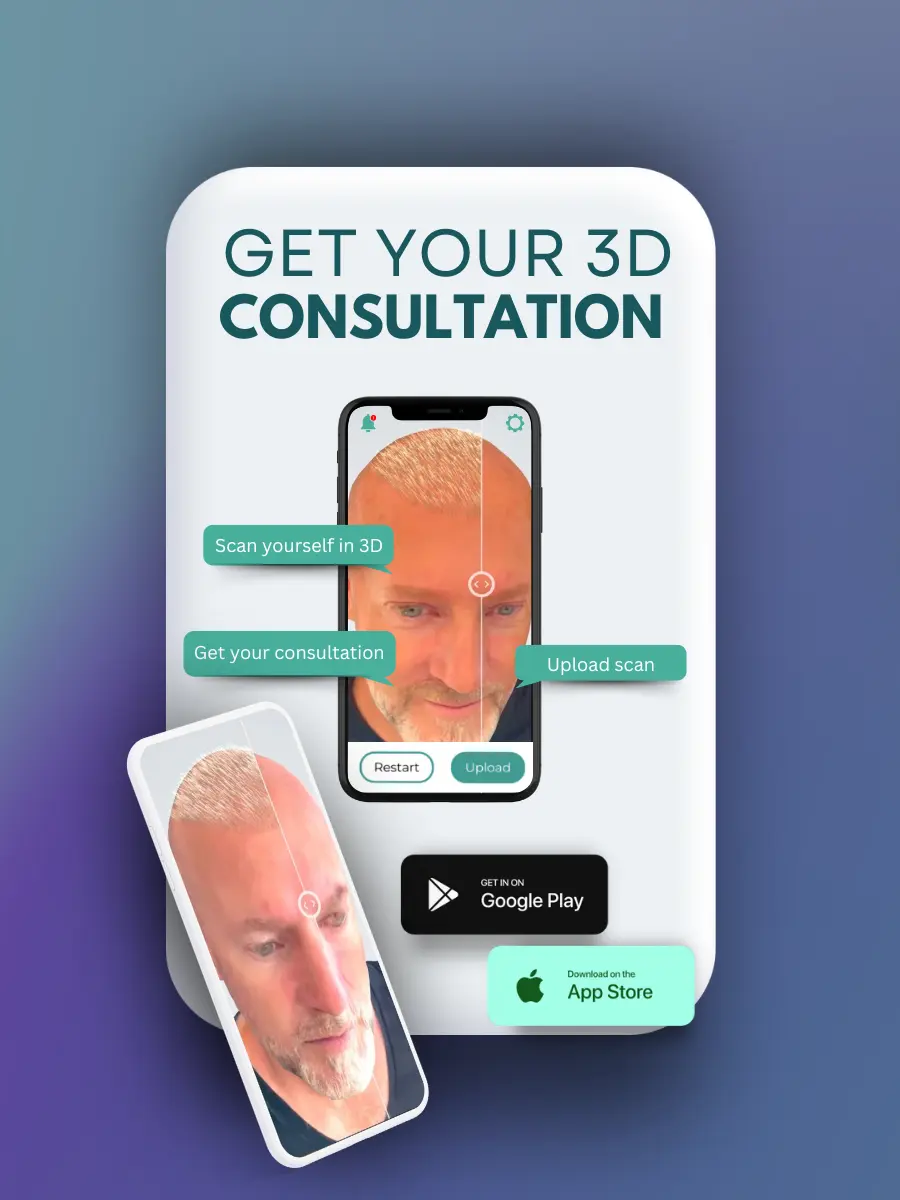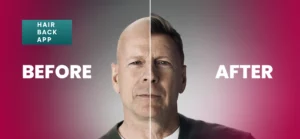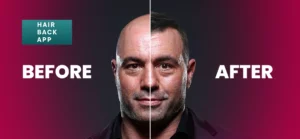Hair transplant trends in 2025 are reshaping the world of hair restoration, introducing groundbreaking advancements that address both aesthetic needs and overall wellness.
The integration of cutting-edge technologies like robotic hair restoration, AI-driven methods, stem cell therapies, and nanotechnology is transforming the industry.
My name is Emma Wright, your resident hair transplant and restoration specialist. Today, we’ll be discussing Hair transplant trends in 2025. This article explores the most significant developments, emerging techniques, and their impact on individuals considering hair restoration procedures.
Key Trends Driving Hair Restoration in 2025
To fully grasp the evolving landscape of hair restoration, here are the leading trends transforming the industry this year:
-
Robotic Hair Restoration: Precision and Personalization
Hair transplant trends in 2025 highlight the rise of robotic hair restoration. Robotic systems like ARTAS are improving precision in follicular unit extraction (FUE) by minimizing human error and enhancing efficiency.
These systems use sophisticated algorithms to map the scalp, ensuring optimal graft harvesting and placement, which leads to shorter recovery times and natural-looking results.
Additionally, robotic procedures now cater to individuals with compromised scalp health, providing a precise, minimally invasive option.
Refined techniques have also made robotic hair restoration suitable for sensitive cases like hair transplant for cancer patient recovery, delivering tailored results with fewer complications.
-
AI-Powered Post-Operative Monitoring Apps
AI-powered mobile applications are revolutionizing post-operative care. These apps provide real-time monitoring, personalized recovery plans, and instant communication with healthcare providers.
Patients receive alerts for medication schedules, follow-up appointments, and scalp care routines. These AI apps also analyze recovery data, providing insights that enable clinics to refine treatments and boost success rates, especially for patients dealing with stress effects on hair transplant challenges.
-
Artificial Intelligence in Hair Restoration
The growing role of artificial intelligence (AI) is central to Hair transplant trends in 2025. AI is transforming the industry by analyzing patient profiles, predicting hair loss patterns, and customizing treatment plans. This approach ensures personalized results, improving both success rates and patient satisfaction.
AI-driven techniques are especially crucial when addressing post transplant hormonal shift, helping monitor hormonal levels and predict changes that may affect outcomes. Integrating predictive analytics, AI tools streamline treatment plans, making procedures more adaptive and results more sustainable.
-
The Rise of Stem Cell Hair Transplants
Stem cell technology continues to redefine Hair transplant trends in 2025. Unlike traditional methods, stem cell procedures encourage natural hair growth by stimulating dormant follicles. This revolutionary approach offers hope for individuals with compromised scalp health, minimizing scarring and promoting quicker recovery.
Emerging research also points to the integration of stem cell technology with genetic therapy, potentially providing permanent solutions for hereditary hair loss. These advancements mark a turning point in personalized and regenerative hair restoration.
-
Nanotechnology and Hair Restoration
A new addition to Hair transplant trends in 2025 is the emergence of nanotechnology. Nanotechnology is enhancing the delivery of growth factors and medications, improving follicle regeneration and scalp health.
This innovation benefits patients dealing with stress effects on hair transplant success, as it strengthens hair follicles and boosts recovery times.
Nanotechnology’s ability to target specific areas of the scalp with precision also supports complex cases such as hair transplant for cancer patient recovery, where gentle yet effective treatments are essential.
-
Advances in 3D Printing for Customized Implants
One of the most exciting additions to Hair transplant trends in 2025 is the use of 3D printing for customized hair follicle implants. This technology allows clinics to create personalized implants based on the patient’s hair density, growth patterns, and scalp characteristics.
The precision of 3D-printed implants improves integration with existing hair, offering more natural results and reducing the need for multiple procedures.
-
Scalp Cooling Techniques for Better Recovery
Scalp cooling technology is emerging as a supportive trend in hair transplant trends in 2025. Cooling systems are being used during and after hair transplant procedures to reduce inflammation, improve blood circulation, and speed up recovery times.
For individuals undergoing transplants after chemotherapy, scalp cooling can also minimize hair loss, supporting successful outcomes in hair transplant for cancer patient cases.
-
Virtual Consultations and Telemedicine Integration
An emerging trend in Hair transplant trends in 2025 is the use of virtual consultations and telemedicine. Patients can now access expert consultations, pre- and post-operative care, and personalized treatment plans remotely.
This trend is improving accessibility, particularly for patients in remote areas, while also reducing costs and travel burdens.
Telemedicine also supports mental health by providing continuous counseling and follow-up care, enhancing the overall patient experience and improving outcomes related to Hair transplant mental health concerns.
-
Innovations in Hair Cloning and Regenerative Medicine
Hair cloning and regenerative medicine are gaining attention as transformative trends in 2025. Researchers are exploring the use of cloned hair follicles to achieve unlimited donor hair, which could revolutionize the industry by providing solutions for patients with limited donor areas.
This technology, combined with regenerative medicine, enhances healing, improves graft survival rates, and minimizes downtime.
Hair cloning techniques are also being tested to combat genetic hair loss, offering potential long-term solutions without the need for repeat procedures.
-
Genetic Testing and Personalized Treatment Approaches
Genetic testing is emerging as a powerful tool in Hair transplant trends in 2025. By analyzing a patient’s genetic profile, clinicians can predict future hair loss patterns and create personalized treatment plans tailored to each individual’s genetic makeup.
This precision medicine approach ensures better outcomes and reduces the risk of unsatisfactory results.
Personalized treatments are particularly valuable in managing post transplant hormonal shift, ensuring tailored solutions that adapt to each patient’s unique hormonal landscape.
-
Role of Patient Testimonials in Shaping Trends
Patient success stories are playing an influential role in shaping Hair transplant trends in 2025. Clinics are now highlighting real-life experiences to demonstrate the effectiveness of various techniques.
These testimonials provide transparency and build trust, especially for individuals considering procedures for the first time.
Stories involving patients overcoming compromised scalp health, or coping with Hair transplant mental health challenges, offer relatable insights. They also showcase how innovative procedures and comprehensive care have transformed lives.
-
Regulatory Developments and Ethical Considerations
As new technologies emerge, regulatory frameworks are evolving. Hair transplant trends in 2025 now emphasize adherence to safety standards and ethical considerations. Guidelines are being updated to ensure transparency in procedures, particularly those involving AI and stem cell technologies.
Ethical practices also cover informed consent, especially when addressing sensitive cases like hair transplant for cancer patient recovery. Regulatory oversight ensures that procedures are safe, effective, and accessible.
-
International Collaborations and Market Expansion
Hair transplant trends in 2025 are witnessing increased international collaborations. Clinics and researchers worldwide are partnering to share knowledge and refine techniques. This global exchange of expertise is improving procedure outcomes and setting industry benchmarks.
Market expansion is also notable, with emerging economies investing in advanced hair restoration solutions. Accessible procedures and affordable pricing models are making treatments more inclusive.
-
Personalized Treatment Plans and AI Monitoring
Personalization remains a cornerstone of Hair transplant trends in 2025. Clinics now create tailored treatment plans based on factors such as age, hair type, and lifestyle. Personalized plans are especially effective in managing post transplant hormonal shift, addressing hormonal fluctuations and ensuring lasting results.
Additionally, real-time AI monitoring systems track progress during recovery, making adjustments where necessary. This dynamic approach ensures optimal outcomes, aligning with patients’ evolving needs.
Additional Insights: Future Trends to Watch
-
Customized Hair Growth Serums
Personalized hair growth serums are expected to become a key part of aftercare in hair transplants. These serums, designed based on a patient’s genetic data and scalp analysis, can significantly improve hair density and strength. The targeted application of these solutions will provide longer-lasting results and better hair texture.
-
Integration of Virtual Reality (VR) in Patient Consultations
Virtual reality is poised to become an essential tool for clinics offering hair transplants. VR simulations will help patients visualize post-transplant outcomes, improving decision-making and managing expectations. This immersive technology can boost patient satisfaction by providing a clear understanding of potential results before the procedure.
-
Focus on Holistic Treatment Approaches
Clinics are shifting toward holistic treatment plans that address both physical and mental well-being. Integrative approaches combining nutrition, stress management, and therapeutic counseling are being adopted to ensure patients achieve optimal results. This focus on holistic wellness complements physical restoration, leading to a healthier recovery and long-term success.
The Future of Hair Restoration
Looking ahead, Hair transplant trends in 2025 pave the way for even more exciting possibilities. Researchers are exploring gene editing technologies and 3D bioprinting of hair follicles, promising permanent solutions for hair loss. These advancements could eliminate the need for repeat procedures, offering patients long-term solutions.
Moreover, interdisciplinary collaborations between dermatologists, psychologists, and geneticists are driving comprehensive, effective approaches to hair restoration. The future promises greater accessibility, personalization, and long-lasting results, transforming the lives of individuals worldwide.
Conclusion
Hair transplant trends in 2025 continue to revolutionize hair restoration. With technologies like robotic procedures, AI-driven customization, stem cell transplants, nanotechnology, hair cloning, patient-centered care, and eco-friendly practices leading the charge, patients now have access to safer, more effective treatments.
The emphasis on Hair transplant mental health, stress management, and personalized plans ensures that hair restoration extends beyond aesthetics, enhancing overall well-being.
As the industry evolves, individuals can expect more inclusive, transformative solutions. The future of hair restoration is bright, promising renewed confidence and improved quality of life for all.















